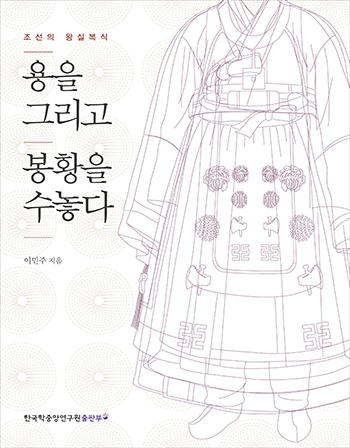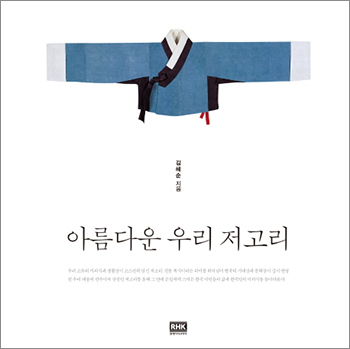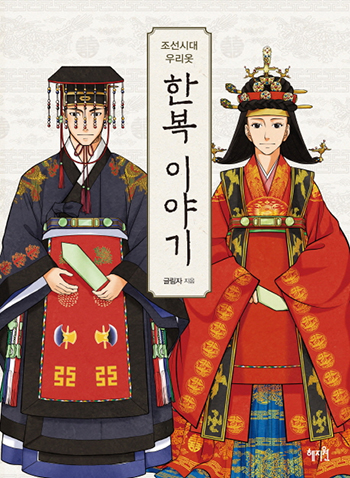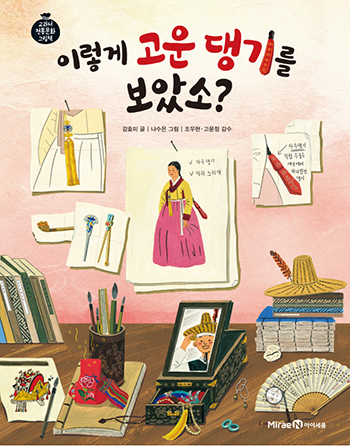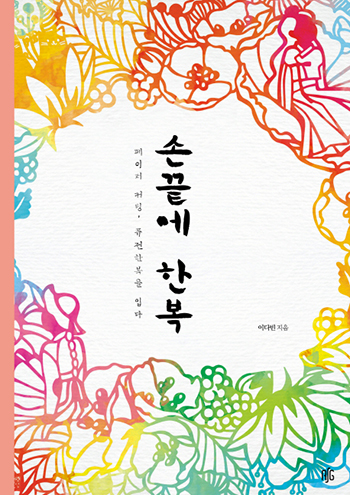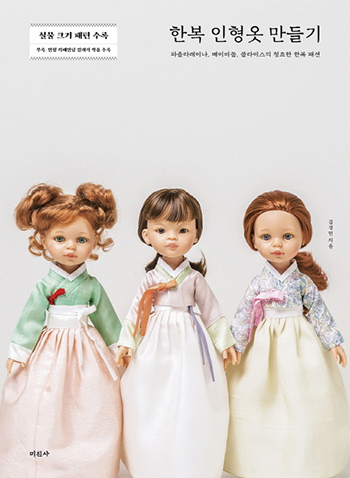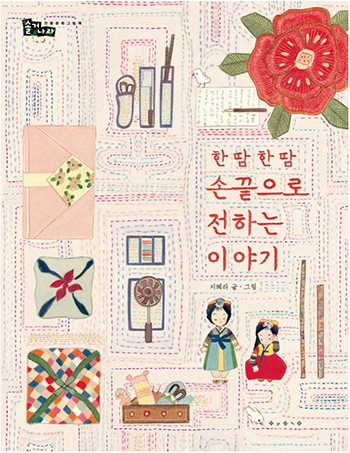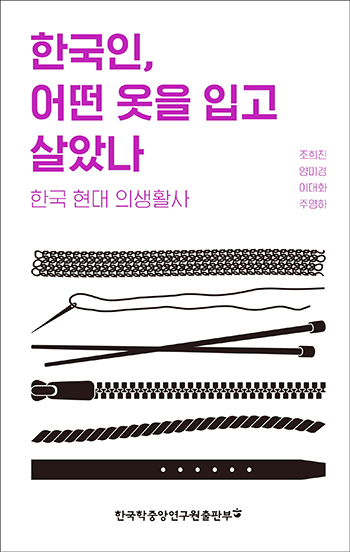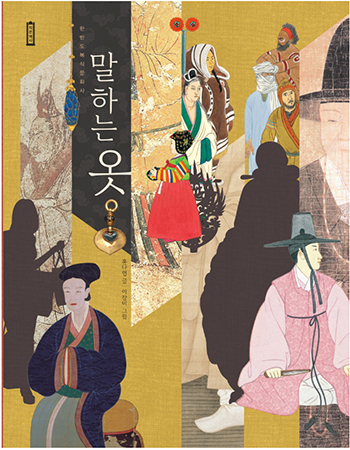|
#Hanbok KPIPA introduces K-Books for global publishing markets through K-Book Platform
2021.02.08
Draw Dragon and Embroider Phoenix
1. Publication Details
Title | Draw Dragon and Embroider Phoenix
2. Copyright Contact
Name | Kim Wonki
3. Book Intro
The royal costume differs from the general costume, starting from the terminology used therefor, and it has a special characteristic that the costume varies depending on the kind of ritual. Especially, the significance of costume was more prominent in the Joseon society with its rigid caste system. Depending on what costume the king wore, the costumes of the queen, the crown prince, the crown princess as well as the people inside the royal court were chosen accordingly, and the contents of the rituals could be determined through the costumes. This book introduces the types of costumes depending on rituals and the system used for the distribution of costumes with a focus on the king and the crown prince who were symbolized by a dragon, and the queen and the crown princess symbolized by a phoenix. As for the royal costume, there are clothes that have been handed down, but it is difficult to grasp the overall outline largely because the clothes are faded in color or few in number. Therefore, this book examines the costumes of the king and queen, focusing on the various royal protocols and the existing costumes, in addition to the liturgical books such as Gukjooryeuiseorye (Book on the Protocols of the Nation's Five Rituals), Gukjooryeuiboseorye (Book on the Crown Princess's Costume), and Sangbangjeongnye (Book on the Royal Costume). The royal costume of the Joseon Dynasty was gorgeous but utilized costumes that were completely divided according to status and protocols while putting forward frugality. As an example, if you look at the patterns on royal costumes, there are 9 patterns embroidered for the king and 7 for the crown prince. In the case of the king, five of the patters are on the king's top and four of them are on the bottoms. * http://www.k-book.or.kr/user/books/books_view?idx=1098
Beautiful Traditional Jeogori
1. Publication Details
Title | Beautiful Traditional Jeogori
2. Copyright Contact
Name | Seongah Bak
3. Book Intro The jeogori encompasses a uniquely Korean aesthetic and tells the stories of the everyday lives of traditional Koreans. While a part of traditional Korean dress, the jeogori remains a symbol of Korean art that is deeply reflected in our times and our culture. It also is a testament to the lives of Korean women and the Korean aesthetic. Professor Kim Hye-soon, a world-renowned hanbok designer and a faithful devotee to traditional Korean dress, has authored this book, a single-volume compilation of everything there is to know about jeogori. Kim has done extensive research into historical archives and data to take the history of Korean clothing to a new level. It is Korea’s first and only encyclopedia on jeogori, a comprehensive primer on the beautiful shapes, rich palette, thoughtful restrained aesthetics, and elegant grace of jeogori. Jeogori, written as 赤古里 in Chinese characters, typically refers to the upper garment that is worn together with pants or a skirt. The garment tends to be shorter than the lower garments. The jeogori dates back to ancient times and has therefore been with Koreans throughout our history. It is a testament to te culture andhe aesthetics of our forebears and a representation of th consciousness of the various eras. In this book, readers will find illustrations of perfectly recreated jeogori spanning across a full 600 years, to detail the origin, types, forms, changes, and schemes, as the jeogori has been worn by Korean women for nearly 6,000 years since ancient times. From the longer jeogori worn by the spirited women of Goryeo, the sophisticated color-blocked jeogori of ladies of the palace, the rough cotton jeogori of the common folk, to the mini jeogori fashioned by gisaeng courtesans, this book outlines different kinds of jeogori that fully represent the loves and lives of Korean women. The jeogori not only contained the aesthetics of our ancestors but also provides glimpses into the cultural trends and ideas of the times. This book follows the historical significance and changes in cultural trends as presented by the changes in jeogori, and by doing so, offers meaningful information to students of traditional Korean clothing and experts, as well as average readers who love traditional Korean dress and wish to keep its spirit alive. * http://www.k-book.or.kr/user/books/books_view?idx=4459
The Story of Hanbok during the Joseon Dynasty
1. Publication Details
Title | The Story of Hanbok during the Joseon Dynasty
2. Copyright Contact
Name | Park Hyeji
3. Book Intro This book describes the hanbok culture that was prevalent during the early and late Joseon Dynasty (1400s to 1800s) as a part of the Korean aesthetic and everyday norms. Each chapter comes complete with rich illustrations and detailed explanations. Hanbok describes the aesthetic ideas and cultural lives of our ancestors. The recent Korean Wave phenomenon has led to growing interest around the world for traditional hanbok. Among the different iterations of hanbok, this book focuses on hanbok during the Joseon era and goes into detail about its characteristics, providing colorful illustrations along the way. The text and drawings in this art book will speak more to beginners or average readers interested in the basic facts about hanbok and its history, more so than students of fashion design or readers with an extensive knowledge on hanbok. Grouped into familiar themes, the book is easy to read and provides clear information in an accessible way so that more readers can become familiar with hanbok. Beginning with the basic structure of hanbok, it delves into its various forms and accessories, along with mention of royal court costumes and outfits. It also describes the different kinds of hanbok worn by the different social classes during the Joseon Dynasty, thereby offering a look into the historical era of the dynasty. * http://www.k-book.or.kr/user/books/books_view?idx=4462
Have You Ever Seen such a Beautiful Daenggi?
1. Publication Details
Title | Have You Ever Seen such a Beautiful Daenggi?
2. Copyright Contact
Name | Lee Ahram
3. Book Intro When watching historical Korean dramas, the most interesting and eye catching points after the story line are the beautiful Hanbok (traditional Korean clothing) worn by the characters and the beautiful accessories with unique personalities. That's why the old accessories in the historical dramas are often popular, and some Korean hairpin (binyeo, or Korean ribbon called daenggi) featured in drams are sold out. However, traditional accessories are not mere beautiful things. It is because many historical facts are hidden in the materials and patterns used in jewelry. Have You Ever Seen such a Beautiful Daenggi? is a picture book that presents the Joseon's representative accessories and its beauty. The story is simple. The fictional character, Myeongdamjeong goes seeking a woman wearing norigae and embroidered daenggi at the request of a gentleman. At the same time, through ornaments that symbolize the social atmosphere and life of the Joseon Dynasty, the book offers a better understanding of the life of our ancestors, as seen in historical dramas. * http://www.k-book.or.kr/user/books/books_view?idx=2216
Hanbok at My Fingertips
1. Publication Details
Title | Hanbok at My Fingertips
2. Copyright Contact
Name | Lee Sangmou
3. Book Intro Hanbok at My Fingertips offers up hanbok in paper art form, with beautifully detailed fusion hanbok illustrations that have incorporated everyday dress and will delight all readers. Lee Dabin, an artist who is already well known on social media through her fusion hanbok illustrations, has lent her talent for this book. The beautifully illustrated hanbok designs, which have been categorized according to the seasons of spring, summer, autumn, and winter, will provide a satisfying sensation and an admiration for the traditional dress. The paper art will make a deep impression on readers. The designs are a fresh take on traditional hanbok, pairing jeogori with skinny jeans and sweaters with chima skirts. As readers cut along the lines, they will find themselves with a satisfyingly completed work of fusion hanbok. * http://www.k-book.or.kr/user/books/books_view?idx=4460
Making Hanbok Clothing for Dolls
1. Publication Details
Title | Making Hanbok Clothing for Dolls
2. Copyright Contact
Name | kim jai yoon
3. Book Intro Tired of the same doll dresses? Now is your chance to dress your lovely dolls in elegant traditional Korean hanbok. Imagine Blythe dolls dressed in colorful flower-patterned jeogori and peach-hued skirts; Baby Doll dolls in gold-trimmed ceremonial hanbok; and Paola Reina dolls in rich jade traditional overcoats. These beautifully adorable dolls will look charming in their elegant hanbok dresses. Don’t pass this up! * http://www.k-book.or.kr/user/books/books_view?idx=4461
A Story Told Stitch by Stitch from the Finger Tips
1. Publication Details
Title | A Story Told Stitch by Stitch from the Finger Tips
2. Copyright Contact
Name | Park Sunjoo
3. Book Intro This picture book intends to display the world of traditional sewing and its significance. This book introduces the various sewing techniques and production processes in detail and shows the depth and beauty of the each artifact work. It also contains the lives and cultures of women of the past, who were frugal housekeepers and also the guardians of traditional culture. * http://www.k-book.or.kr/user/books/books_view?idx=2329
Koreans, What They Wore
1. Publication Details
Title | Koreans, What They Wore
2. Copyright Contact
Name | Kim Wonki
3. Book Intro This book chronologically traces changes in Korean clothing culture since Korea's Liberation Day on August 15th, 1945. Clothing culture is shaped by the 'people' who make and wear the clothes and also by their actions and thoughts. This book chronologically studies a collective psychology and the way it is expressed in clothing, particularly attending to the people who wear it, and their thoughts and choices. It also focuses on the connection between a single article of clothing or fashion trend and the effect it had on society and culture as a whole. To do this, this book selects the fashion trends that had the deepest connections with the societal and cultural background at the times that they emerged. This book explores their meanings within the context of the time period that they were most prominent. You could call this book a collection of records that reflect contemporary views and evaluations of past clothing culture. These records reveal the past of the clothing culture from the viewpoint of the humanities and social studies. * http://www.k-book.or.kr/user/books/books_view?idx=2505
Beauty Regimen and Attire of the Royal Family of Joseon
1. Publication Details
Title | Beauty Regimen and Attire of the Royal Family of Joseon
2. Copyright Contact
Name | Kim, Myung-hee
3. Book Intro
Wigs made of shiny black Korean hair have become a worldwide fad in recent years. Yet Korean hair-do’s popularity has a long history. A traditional Korean wig, gache, was well known for its beauty even in China in olden times. Not only during the Joseon Dynasty but also during the Three Kingdoms period Korean women paid much attention to their beauty regimens and attire, and Chinese women and Japanese women were also very interested in Korean beauty regimens and attire. How did the royal ladies of the Joseon Dynasty take care of their appearances? There has not been much research about how women dressed their hair, what they used for makeup, and what kinds of accessories they wore in olden times. However, the fact that a certain type of style was popular at a certain time implies that there existed a universality of aesthetic sense at any particular time. Aesthetic sense changes with the passage of time, so it constitutes the basis of a culture. This book examines paintings and artifacts that are representative of these respective eras in order to imagine the lives of women in each era and it further attempts to look into the differences among these phenomena in terms of era and nation. *http://www.k-book.or.kr/user/books/books_view?idx=3953
Talking Clothes
1. Publication Details
Title | Talking Clothes
2. Copyright Contact
Name | Park sunjoo
3. Book Intro
As the subtitle "History of Korean Clothing Culture" implies, the book examines the history of Korean clothing in this single picture book. In particular, the book covers twenty-nine interesting topics as to why, how, and what we, as the "dressed animals," have lived in so far since the ancient Paleolithians first stripped off animal fur to dress in. The thing that makes this book more interesting is refined, detailed illustration. * http://www.k-book.or.kr/user/books/books_view?idx=2323
|
Pre Megazine
-

Projects Supported by the KPIPA in the First Half of 2024
VOL.69
2024.04 -

Philosophy Changes Weather
VOL.69
2024.04 -

2nd Week, March 2024
VOL.69
2024.04 -

#Sky
VOL.69
2024.04 -

Agency list
VOL.69
2024.04 -

Surrender, Earth Creatures
VOL.68
2024.03 -

3rd Week, February 2024
VOL.68
2024.03 -

#School
VOL.68
2024.03 -

Killer-content Exhibition at the 2024 Bologna Children’s Book Fair
VOL.68
2024.03 -

Agency list
VOL.68
2024.03 -

Paik’s Korean Liquor
VOL.67
2024.02 -

4th Week, January 2024
VOL.67
2024.02 -

Minjeong Jeong
VOL.67
2024.02 -

#Start
VOL.67
2024.02 -

Agency list
VOL.67
2024.02 -

Hyeon Jeong Lee
VOL.66
2024.01 -

Agency list
VOL.66
2024.01 -

We Won’t Leave the Earth
VOL.66
2024.01 -

#Winter
VOL.66
2024.01 -

1st Week, December 2023
VOL.66
2024.01 -

My Time Does Not Flow Like Yours
VOL.65
2023.12 -

2nd Week, November 2023
VOL.65
2023.12 -

Konishi Naoko
VOL.65
2023.12 -

#Flower
VOL.65
2023.12 -

Wrap-up Summary of the 2023 Sharjah International Book Fair: Korean Pavilion
VOL.65
2023.12 -

2023 Korea Picture Book Award
VOL.65
2023.12 -

Agency list
VOL.65
2023.12 -

The Only One
VOL.64
2023.11 -

2nd Week, October 2023
VOL.64
2023.11 -

Yoojin Lee
VOL.64
2023.11 -

#Book Fair
VOL.64
2023.11 -

Sharjah International Book Fair 2023: Korean Pavilion
VOL.64
2023.11 -

Agency list
VOL.64
2023.11 -

Things I Couldn’t Throw Away Again
VOL.63
2023.10 -

2nd Week, September 2023
VOL.63
2023.10 -

Li Xia
VOL.63
2023.10 -

#Autumn
VOL.63
2023.10 -

Agency list
VOL.63
2023.10 -

The Baobab and the Snail
VOL.62
2023.09 -

2nd Week, August 2023
VOL.62
2023.09 -

Kang Bang-Hwa
VOL.62
2023.09 -

2023 Visiting Korean Book Fair in Paris
VOL.62
2023.09 -

Agency list
VOL.62
2023.09 -

#Photograph
VOL.62
2023.09 -

The Sound of Summer
VOL.61
2023.08 -

3rd Week, July 2023
VOL.61
2023.08 -

Slin Jung
VOL.61
2023.08 -

#Food
VOL.61
2023.08 -

Agency list
VOL.61
2023.08 -

Brilliant Regards
VOL.60
2023.07 -

2nd Week, June 2023
VOL.60
2023.07 -

HOANG HAI VAN
VOL.60
2023.07 -

#Life
VOL.60
2023.07 -

Titles Selected for the Overseas Publication Grants 2023
VOL.60
2023.07 -

Agency list
VOL.60
2023.07 -

Together, and There Shall be the Path
VOL.59
2023.06 -

2nd Week, May 2023
VOL.59
2023.06 -

XIAO ZHUANG
VOL.59
2023.06 -

#Dream
VOL.59
2023.06 -

Agency list
VOL.59
2023.06 -

I’m in Tongyeong
VOL.58
2023.05 -

2nd Week, April 2023
VOL.58
2023.05 -

2023 Visiting Korean Book Fair in Tokyo
VOL.58
2023.05 -

Moon Chakage
VOL.58
2023.05 -

#Love
VOL.58
2023.05 -

Agency list
VOL.58
2023.05 -

UN HE PAIK
VOL.57
2023.04 -

Joseon Art Museum
VOL.57
2023.04 -

2nd Week, March 2023
VOL.57
2023.04 -

#SF
VOL.57
2023.04 -

2023 Overseas Publication Grants
VOL.57
2023.04 -

Agency list
VOL.57
2023.04 -

Books Sotheby’s Loved
VOL.56
2023.03 -

3rd Week, February 2023
VOL.56
2023.03 -

Lee Tae-Yeon
VOL.56
2023.03 -

#Companion Animal
VOL.56
2023.03 -

Agency list
VOL.56
2023.03 -

Agency list
VOL.55
2023.02 -

Always Smile
VOL.55
2023.02 -

3rd Week, January 2023
VOL.55
2023.02 -

Helen Cho
VOL.55
2023.02 -

#Travel in Korea
VOL.55
2023.02 -

Killer-content Exhibition at the 2023 Bologna Children’s Book Fair
VOL.55
2023.02 -

2023 Future Science Trends
VOL.54
2023.01 -

1st Week, December 2022
VOL.54
2023.01 -

Sandy Joosun Lee
VOL.54
2023.01 -

#2022 K-Book Copyright Market
VOL.54
2023.01 -

Agency list
VOL.54
2023.01 -

The Age of Daughters
VOL.53
2022.12 -

2nd Week, November 2022
VOL.53
2022.12 -

VO THI KHANH LAN
VOL.53
2022.12 -

#Mystery & Thriller
VOL.53
2022.12 -

Agency list
VOL.53
2022.12 -

You’re Light
VOL.52
2022.11 -

2nd Week, October 2022
VOL.52
2022.11 -

Kaparushkina Diana (Jang Diana)
VOL.52
2022.11 -

#Library
VOL.52
2022.11 -

2022 K-Book Copyright Market
VOL.52
2022.11 -

Agency list
VOL.52
2022.11 -

Eun Hye’s Hug
VOL.51
2022.10 -

2nd Week, September 2022
VOL.51
2022.10 -

Kong Yuan
VOL.51
2022.10 -

#Self-Esteem
VOL.51
2022.10 -

Agency list
VOL.51
2022.10 -

Tube
VOL.50
2022.09 -

2nd Week, August 2022
VOL.50
2022.09 -

Alyssa Kim
VOL.50
2022.09 -

#Environment & Climate Change
VOL.50
2022.09 -

Killer-Content Exhibition at the 2022 Göteborg Book Fair
VOL.50
2022.09 -

Agency list
VOL.50
2022.09 -

Post-Mobility
VOL.49
2022.08 -

2nd Week, July 2022
VOL.49
2022.08 -

Ji-Hyun PARK, CELESTIN
VOL.49
2022.08 -

#2022 Visiting Korean Book Fair - Indonesia
VOL.49
2022.08 -

Agency list
VOL.49
2022.08 -

Titles Selected for the Overseas Publication Grants 2022 (Results)
VOL.49
2022.08 -

2022 Visiting Korean Book Fair in Tokyo
VOL.48
2022.07 -

It’s Time to Say Goodbye
VOL.48
2022.07 -

1st Week, June 2022
VOL.48
2022.07 -

Park Kyeong-Hee
VOL.48
2022.07 -

#Friendship
VOL.48
2022.07 -

Agency list
VOL.48
2022.07 -

Agency list
VOL.47
2022.06 -

Today’s Jaram
VOL.47
2022.06 -

2nd Week, May 2022
VOL.47
2022.06 -

Mi Hyun Kim
VOL.47
2022.06 -

#Picture Books
VOL.47
2022.06 -

Words Without Heart
VOL.46
2022.05 -

2nd Week, April 2022
VOL.46
2022.05 -

Jin Jin-Joo
VOL.46
2022.05 -

#Science - Children’s Books
VOL.46
2022.05 -

Seoul International Book Fair 2022
VOL.46
2022.05 -

Agency list
VOL.46
2022.05 -

Queen of Words
VOL.45
2022.04 -

2nd Week, March 2022
VOL.45
2022.04 -

Gi Jang
VOL.45
2022.04 -

#K-Webtoon Fantasy
VOL.45
2022.04 -

South Korea the Guest of Honor at the 2022 Bogota International Book Fair (FILBO)
VOL.45
2022.04 -

Agency list
VOL.45
2022.04 -

Winners of the 2022 Bologna Ragazzi Award
VOL.44
2022.03 -

Metaverse Sapiens
VOL.44
2022.03 -

2nd Week, February 2022
VOL.44
2022.03 -

Bae Yang-Soo (裵凉秀)
VOL.44
2022.03 -

#K-Webtoon Slice of Life/Romance
VOL.44
2022.03 -

2021 Translation Grants for Publications (Results)
VOL.44
2022.03 -

Agency list
VOL.44
2022.03 -

Yeoni and Willow Bachelor
VOL.43
2022.02 -

3rd Week, January 2022
VOL.43
2022.02 -

Sungrye Han (한성례, 韓成禮)
VOL.43
2022.02 -

#K-Webtoon Drama
VOL.43
2022.02 -

2022 Visiting Korean Book Fair
VOL.43
2022.02 -

Agency list
VOL.43
2022.02 -

Agency list
VOL.42
2022.01 -

NINE
VOL.42
2022.01 -

1st Week, December 2021
VOL.42
2022.01 -

Amber Hyun Jung Kim
VOL.42
2022.01 -

#K-Drama
VOL.42
2022.01 -

2022 Overseas Publication Grants
VOL.42
2022.01 -

Agency list
VOL.41
2021.12 -

KPIPA joined the 2021 Guadalajara International Book Fair
VOL.41
2021.12 -

#Cooking
VOL.41
2021.12 -

Seung Joo-Yeoun
VOL.41
2021.12 -

09:47
VOL.41
2021.12 -

1st Week, November 2021
VOL.41
2021.12 -

Before Overtaxing Oneself
VOL.12
2019.06 -

South Korea's May Bestsellers
VOL.12
2019.06 -

Export Prospects of Korean Books
VOL.12
2019.06 -

Science Cookie
VOL.13
2019.07 -

South Korea's June Bestsellers
VOL.13
2019.07 -

Export Prospects of Korean Books
VOL.13
2019.07 -

The Story of Dolphin
VOL.14
2019.08 -

South Korean Bestsellers in July
VOL.14
2019.08 -

Export Prospects of Korean Books
VOL.14
2019.08 -

Export Prospects of Korean Books
VOL.15
2019.09 -

South Korean bestsellers in August
VOL.15
2019.09 -

Kakao Friends Essay Series
VOL.15
2019.09 -

Export Prospects of Korean Books
VOL.16
2019.10 -

South Korean bestsellers in September
VOL.16
2019.10 -

The Science of Conception
VOL.16
2019.10 -

Stranger Museum
VOL.40
2021.11 -

Agency list
VOL.40
2021.11 -

KPIPA Joins the 2021 China Shanghai International Children’s Book Fair (CCBF)
VOL.40
2021.11 -

#Poem
VOL.40
2021.11 -

Yoon Sunme
VOL.40
2021.11 -

2nd Week, October 2021
VOL.40
2021.11 -

Export Prospects of Korean Books
VOL.17
2019.11 -

South Korean bestsellers in October
VOL.17
2019.11 -

Bamboo Yoga
VOL.17
2019.11 -

Export Prospects of Korean Books
VOL.18
2019.12 -

South Korean bestsellers in November
VOL.18
2019.12 -

Fish in the water
VOL.18
2019.12 -

2019 South Korea-China Publishing Copyright Exchanges Event
VOL.18
2019.12 -

Export Prospects of Korean Books
VOL.19
2020.02 -

3rd Week, January 2020
VOL.19
2020.02 -

Elementary Science Q2 Please take care of the Earth
VOL.19
2020.02 -

Export Prospects of Korean Books
VOL.20
2020.03 -

3rd Week, February
VOL.20
2020.03 -

Social Impact
VOL.20
2020.03 -

Export Prospects of Korean Books
VOL.21
2020.04 -

2nd Week, March
VOL.21
2020.04 -

Plants for those who are suffering
VOL.21
2020.04 -

Agency list
VOL.39
2021.10 -

K-Book Promotion Event
VOL.39
2021.10 -

#Adolescent Literature
VOL.39
2021.10 -

WANG TSE YU
VOL.39
2021.10 -

2nd Week, September 2021
VOL.39
2021.10 -

The Sun Is Radiant, and Life Is Precious
VOL.39
2021.10 -

Agency list
VOL.38
2021.09 -

Announcement on 2021 K-Book Translation Contest
VOL.38
2021.09 -

#Preference & Hobby
VOL.38
2021.09 -

Oka Hiromi
VOL.38
2021.09 -

2nd Week, August 2021
VOL.38
2021.09 -

Summer
VOL.38
2021.09 -

Export Prospects of Korean Books
VOL.22
2020.05 -

2nd Week, April
VOL.22
2020.05 -

What is this line for?
VOL.22
2020.05 -

2020 Online Meetings with Indonesian Publishers
VOL.23
2020.06 -

#Science and Humanities
VOL.23
2020.06 -

3rd Week, May
VOL.23
2020.06 -

Alexandra Kim, la sibérienne
VOL.23
2020.06 -

#Environment
VOL.24
2020.07 -

3rd Week, June
VOL.24
2020.07 -

Three Generations of Railworkers
VOL.24
2020.07 -

Agency list
VOL.37
2021.08 -

I Play, Therefore I Am
VOL.37
2021.08 -

Announcement on 2021 K-Book Translation Contest
VOL.37
2021.08 -

Anton Hur
VOL.37
2021.08 -

#Travel in KOREA
VOL.37
2021.08 -

2nd Week, July 2021
VOL.37
2021.08 -

2020 Overseas Publication Grants
VOL.25
2020.08 -

#Minorities in society
VOL.25
2020.08 -

2nd Week, July
VOL.25
2020.08 -

Green Tangerine
VOL.25
2020.08 -

2020 Korea-Indonesia Online Meeting
VOL.26
2020.09 -

#2020 Moscow International Book Fair(Picture Books)
VOL.26
2020.09 -

3rd Week, August
VOL.26
2020.09 -

Space Created by Space
VOL.26
2020.09 -

K-Book Copyright Fair Online
VOL.27
2020.10 -

#K-Book Copyright Fair Online
VOL.27
2020.10 -

1st Week, September
VOL.27
2020.10 -

The Whole House Clean-Out Services for Dead Men
VOL.27
2020.10 -

Fridge Family Defeats Zombies
VOL.36
2021.07 -

Agency list
VOL.36
2021.07 -

Jamie Chang
VOL.36
2021.07 -

Overseas Publication Grants 2021
VOL.36
2021.07 -

#Fantasy Webnovel
VOL.36
2021.07 -

3rd Week, June 2021
VOL.36
2021.07 -

K-Book Copyright Fair Online
VOL.28
2020.11 -

#Feminism
VOL.28
2020.11 -

3rd Week, October 2020
VOL.28
2020.11 -

1 Minute Science
VOL.28
2020.11 -

K-Book Copyright Fair Online
VOL.29
2020.12 -

#Traditional Culture(Picture Books)
VOL.29
2020.12 -

2nd Week, November 2020
VOL.29
2020.12 -

Regarding Starknitting
VOL.29
2020.12 -

#Trend & Marketing
VOL.30
2021.01 -

1st Week, December 2020
VOL.30
2021.01 -

See What They Mean, Say What You Mean
VOL.30
2021.01 -

2021 Overseas Publication Grants
VOL.31
2021.02 -

#Hanbok
VOL.31
2021.02 -

3rd Week, January 2021
VOL.31
2021.02 -

Celltrionism
VOL.31
2021.02 -

2021 VISITING KOREAN BOOK FAIR
VOL.32
2021.03 -

Pit-a-Pat with Acorn
VOL.32
2021.03 -

2nd Week, February 2021
VOL.32
2021.03 -

#Learning Cartoon Books
VOL.32
2021.03 -

Winners of the 2021 Bologna Ragazzi Award
VOL.35
2021.06 -

Agency list
VOL.35
2021.06 -

One Day, Death Spoke to Life
VOL.33
2021.04 -

How To Draw Without Being Afraid
VOL.35
2021.06 -

2nd Week, March 2021
VOL.33
2021.04 -

#Mystery Thriller Crime
VOL.33
2021.04 -

#Celebrity’s Essay
VOL.35
2021.06 -

3rd Week, May 2021
VOL.35
2021.06 -

Snowstorm
VOL.34
2021.05 -

Agency list
VOL.34
2021.05 -

K-BOOK Platform User Guide
VOL.34
2021.05 -

2021 K-Book Copyright Fair Online
VOL.34
2021.05 -

#Essay
VOL.34
2021.05 -

2nd Week, April 2021
VOL.34
2021.05


